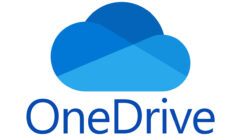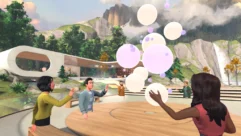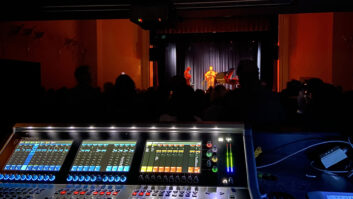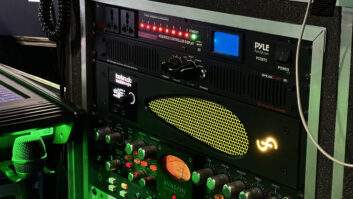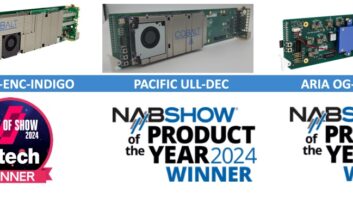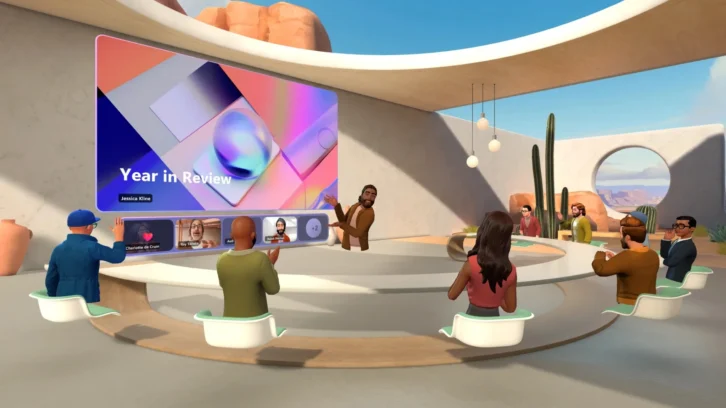
In an effort to help bridge the gap between fully remote and hybrid work, Microsoft launched Microsoft Mesh, a new virtual meeting platform that utilizes 3D avatars to help team members feel connected. If this sounds a little dystopian, read on to hear how four companies have really liked using it.
Employees’ avatars can meet up in premade spaces designed by Microsoft, ranging from chic boardrooms to exotic getaways, in order to help virtual meetings feel more engaging, while full support for Meta Quest can make things feel more immersive—or impersonal depending on how you look at it. In addition to its use as a standalone app for large-scale immersive meetings, Mesh avatars and meeting spaces can also be accessed in Teams. The new product is being marketed by Microsoft as highly customizable without the need for any coding expertise, letting employers fully deck out their meeting spaces with personalized branding. Here’s how Microsoft explains it:
Mesh in Teams elevates engagement in Teams meetings with ready-made 3D immersive spaces… whether it’s a team social gathering, brainstorming session, or a round-table discussion. Design an avatar to represent yourself and include everyone in the conversation. Host multiple, simultaneous small-group discussions with spatial audio, which enables productive side conversations during brainstorming, like in the physical world. This lessens the cognitive load and boosts the effectiveness of discussions. Use the same Teams features you love from within a 3D space, like accessing shared content for collaboration, communicating with Teams chat, and using live reactions to express yourself.
Organizations can use Mesh for everyday interactions, but can also build custom environments and experience, without coding. Users can start with a set of ready-made immersive spaces and add things like branded banners and videos. Microsoft’s event organizer tools allow users to fit these personalized elements into the flow of an event. For more advanced applications, Unity with the Mesh toolkit can be used to create custom interactive experiences, including venues for all hands meetings, onboarding, simulations, or training.
Mesh is now available for all tiers of Microsoft Teams and Microsoft 365 subscribers. Alternatively, a free six-month trial, including the Mesh editor and toolkit, is available now to all business users.
If you’re still wondering how this could be possible, the Microsoft blog provides four real-world examples to support the idea that employee onboarding, town halls, brainstorming sessions, and networking events can all address the relationship challenge of virtual work with virtualization and mixed reality. Nicole Herskowitz, Vice President of Microsoft Teams shares four customer stories.
 Mesh at Takeda Pharmaceutical
Mesh at Takeda Pharmaceutical
Their journey began when they sought a costeffective way to help their geo-diverse workforce connect and further their common cultural understanding.
Takeda built a custom solution designed to cultivate engagement, bolster commitment to their corporate philosophy, and accelerate product innovation: the Hirameki Garden. The garden, created in Microsoft Mesh, serves as a virtual venue for large, company-wide events like town halls and all hands meetings.
Employees gather from all over the world to celebrate major organizational milestones and learn directly from their top leaders, in a space that was specifically designed to represent their corporate values.
Leo Barella shares that “the future of work is no longer simply an abstract concept—it’s already here and it’s transforming the employee experience. Microsoft Mesh empowers us to create custom virtual experiences that perfectly capture the spaces that represent our operating model, corporate philosophy, and values. Employees all over the world—regardless of their location or role type – can participate in a virtual world that brings the company to life in an engaging and meaningful way and helps them feel an authentic sense of connection. When it comes to the potential use cases and benefits, we’re only really scratching the tip of the iceberg.”
Takeda has crafted several other virtual spaces in addition to the Hirameki Garden, including a gallery showcasing patient stories and their history of innovation in their industry. This space grounds employees in the organization’s purpose and promotes genuine empathy for their customers.
 Mesh at Accenture Consulting
Mesh at Accenture Consulting
One of the largest consulting firms in the world, needed to scale their onboarding program to accommodate their growing global workforce in a cost-effective and sustainable way. In 2021, they partnered with Microsoft to design a solution that maintains authentic connection, promotes cultural understanding, and encourages unity across their organization. To date, Accenture has welcomed more than 300,000 new hires from around the world at One Accenture Park, a virtual campus created in Microsoft Mesh. Each newhire cohort is invited to ride the virtual monorail to different educational exhibits, expert talks in auditoriums, and events in gathering spaces to meet their colleagues and learn about key skills to be successful in their new roles.
Ellyn Shook, Accenture’s Chief Leadership & Human Resources Officer, explains that their reimagined onboarding experience “enables new joiners to discover our culture, core values and how Accenture drives value for our clients, people, and communities. All in a collaborative, immersive way that transcends space and place. This, coupled with key in-person experiences, deepens human connection like never before.
 Mesh at BP Energy
Mesh at BP Energy
The global energy company, was interested in scaling specialized physical meeting spaces, called Highly Immersive Visualization Environments (HIVEs), that allow experts to comprehend and collaborate on complex issues in a way that wouldn’t be possible with traditional tools. A physical space of this caliber requires significant financial investment to build and maintain and travel investment to accommodate in-person expert participation. So, BP partnered with Microsoft to design and pilot a cutting-edge, collaborative environment using Microsoft Mesh to connect their global teams more effectively and safely from anywhere in the world via a lower cost and lower carbon digital solution. Soon, experts will be able to come together virtually in HIVEs to monitor wind turbines in a remote location or troubleshoot equipment repairs using digital twins without ever leaving their office.
Roger Rohatgi, Vice President and Global Head of Design for bp, shares that “highly immersive visualization environments open the path to a more digital and collaborative future for bp. By partnering with Microsoft Mesh, we are able to explore how to use advanced technology for faster, more informed, and safer decision making as we pursue our ambition to become an integrated energy company.”
 Mesh at Mercy Ships
Mesh at Mercy Ships
The international charity that utilizes hospital ships to provide free surgical care and education to in-need communities in Africa, is comprised of predominantly volunteer-led crews with a turnover rate as high as 350%. And their 3,000-person crew is physically distributed, representing more than 60 nations. These circumstances called for more efficient training practices that remained effective and accessible to everyone, meaning they couldn’t require any special equipment beyond a PC and a network connection. With the support of Dell Technologies and Link To VR, Mercy Ships built the Global Mercy, a digital replica of one of their hospital ships, in Microsoft Mesh. This will allow their organization to educate volunteers, staff, and prospective donors on the culture and operations of the organization before ever boarding the physical ship. Remote access provided over PC or VR headset offers a truly immersive experience while significantly reducing travel costs and time commitments. More efficient training practices means more time spent maximizing the healthcare services provided to these communities in need.
Dave Shwadlenak, Vice President of Information Services at Mercy Ships, adds that their organization is “excited by the prospect of using the Global Mercy digital twin in Mesh. It allows our volunteers, who travel to our vessels from around the world, to experience our ships virtually before they physically arrive, which enhances their onboarding experience. This technology also offers a virtual experience to our donors who might not otherwise be able to travel to our ships, allowing them to see the tremendous work on our vessels and to connect with our mission in a more personal way. As you can see, we’re very pleased because it provides another means by which we can share how Mercy Ships is bringing hope and healing.”


